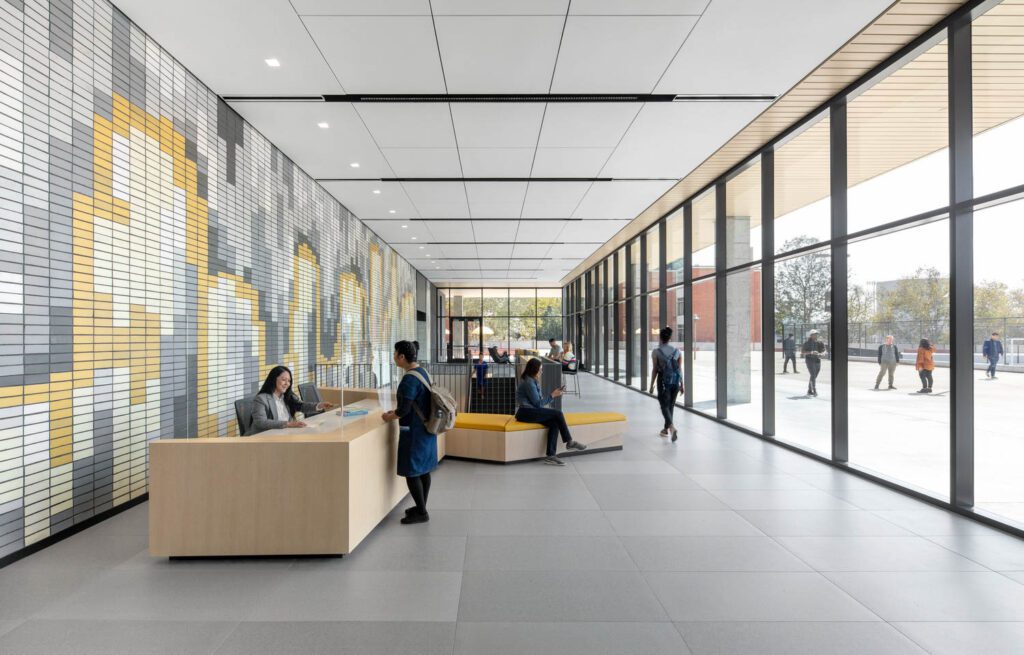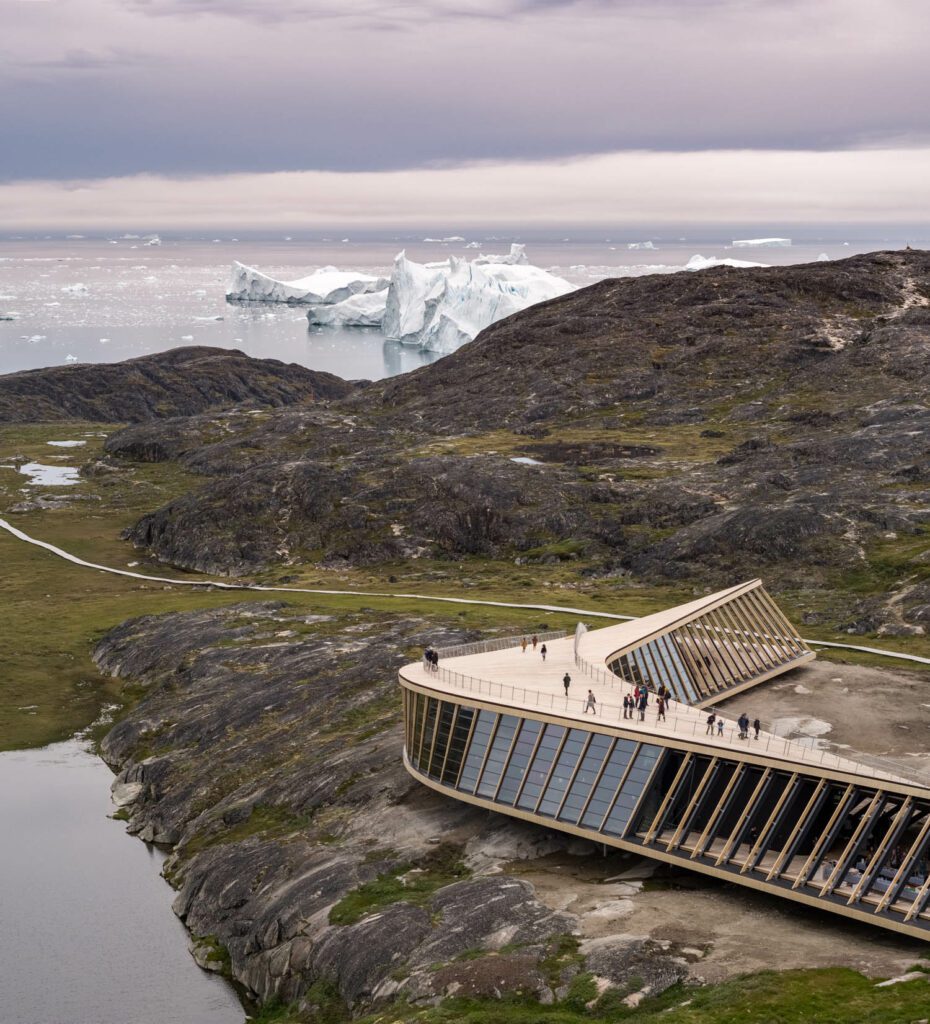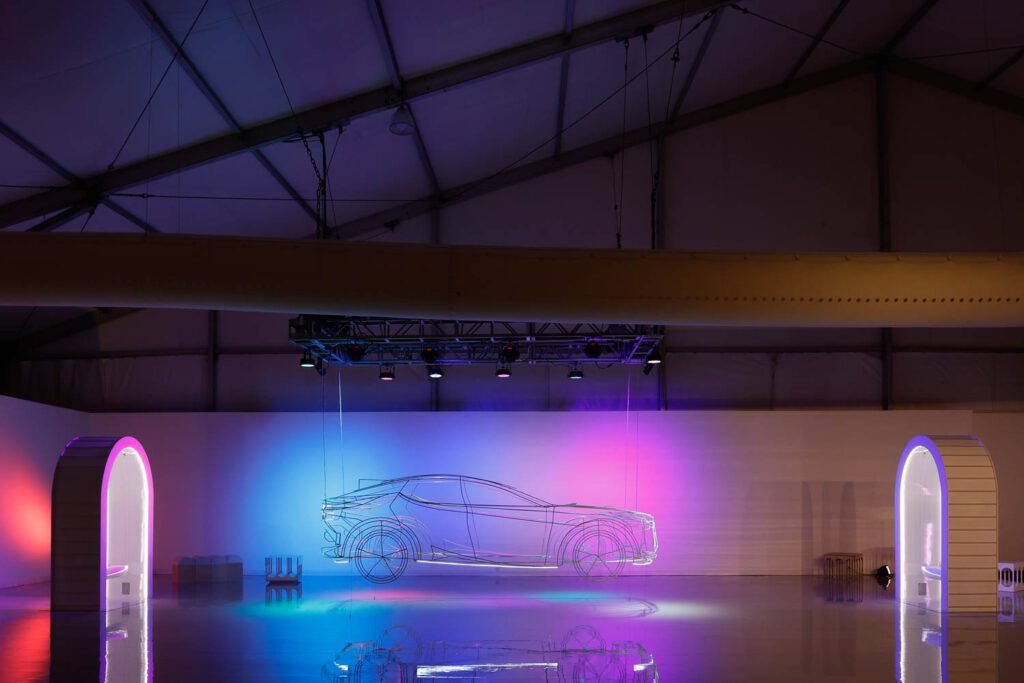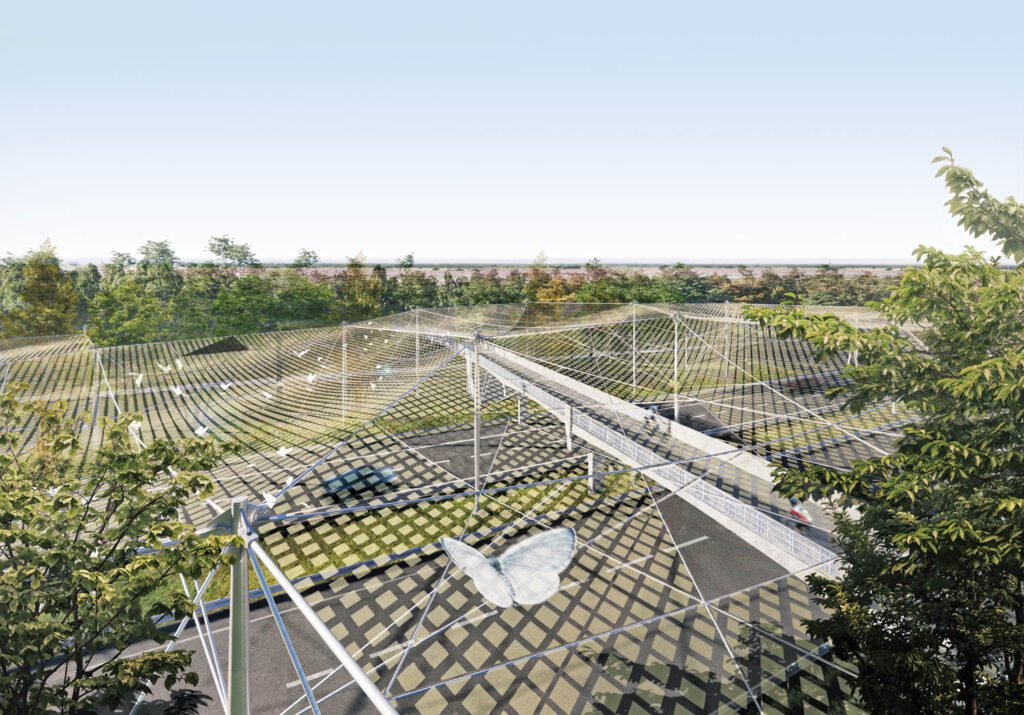
Architect Cécilia Gross Discusses the Lasting Impact of her Sustainable Projects
Led by a deep concern for the natural world, architect Cécilia Gross designs sustainable projects that start small but engender oversize eco-positive results.
As a partner-director at ecologically aware Amsterdam studio VenhoevenCS, architect Cécilia Gross is no stranger to green roofs, solar panels, and eco-friendly construction techniques. But the real environmental impact of her firm’s projects lies in their capacity to act as catalysts, inspiring others to play their own important role in the sustainability movement.
For instance, consider the meaningful lifestyle shifts set in motion by Het Platform, a mixed-use development that VenhoevenCS recently completed in Utrecht. To cut down on car travel, the building consolidates rental housing and common work and recreational facilities into a single structure suspended above local rail lines. Given its scale, the complex could have easily come off feeling insular, but Het Platform’s stacked forms and balconies instead contribute to a dynamic, inviting community destination. “Densification near a mobility hub is smart,” Gross notes. “But you also have to make it attractive enough to draw people in.”
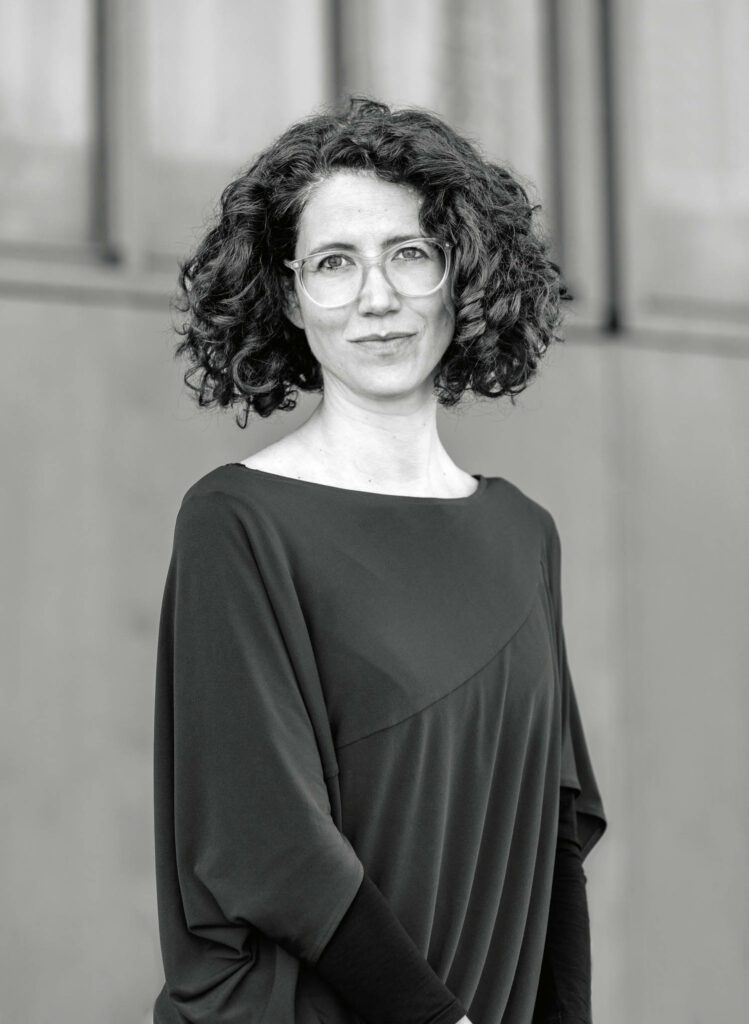
Born in France, Gross is collaborating with the French firm Ateliers 2/3/4 on the 2024 Olympic Games Aquatics Centre in Paris. Along with its innovative timber framework, another of the facility’s green features will be its upcycled seating, manufactured from plastic waste collected by Parisian youth as part of a civic engagement program. “It’s making the future generation more sensitive to sustainability by inviting them to contribute to this exceptional building in their city,” she explains. We spoke with the architect about the role that design can play in improving our environmental footprint.
Interior Design: You describe Het Platform as a “micro city.” How do you define that concept?
Cécilia Gross: It starts with walking, which is really the basis of a good life in a neighborhood. There are a lot of things we shouldn’t have to move so far to get—food, for one. But it’s not only about providing stuff. Walking is also a healthy way to move, and it’s a good way to meet people. In the Netherlands, we’re crazy about cycling, but when you slow down, you experience more of the social aspects of the city. Of course, having Het Platform so close to a public transport hub allows people also to extend their lives further using green mobility. It’s a balance.
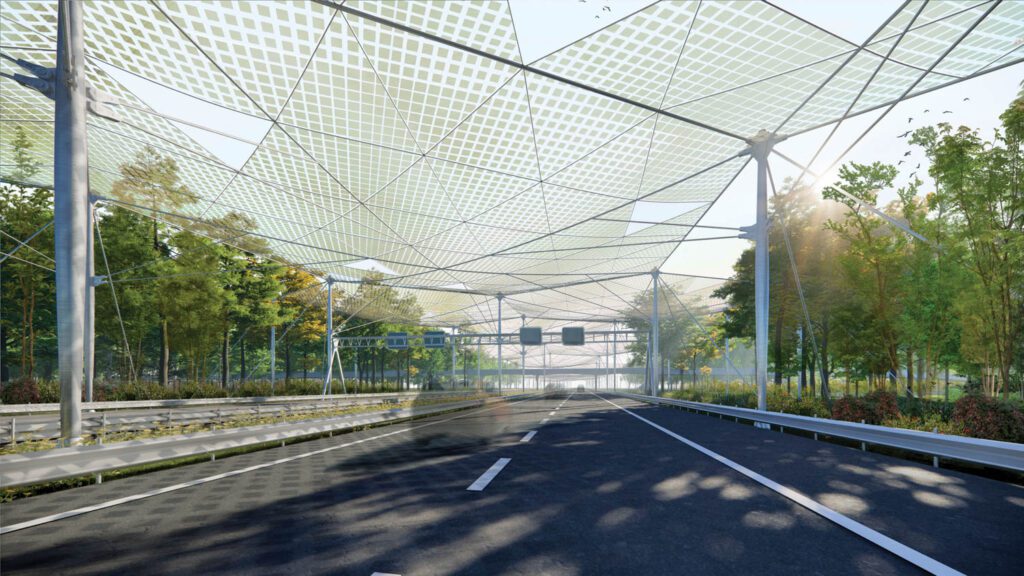
ID: Another Het Platform innovation is its steel structure. How does that improve the ecological footprint?
CG: The city’s original plan was to put a concrete table structure—a big plate with thick pillars—above the tram lines. We proposed an alternative solution that integrates layers of lightweight 3D steel trusses, which cut the amount of concrete and steel we needed in half. That back-and-forth during the design process is very important. Confronting a vision together with everybody around the table leads to smarter and more sustainable solutions. In this case, the steel construction becomes part of the experience of the building.
ID: Its rooftop gardens consider more than just people. What’s your approach to these green spaces?
CG: As an office, we are driven to see the planet as a whole. If something looks nice but is going to destroy us in the long-term, forget about it. When it comes to landscaping, our work is not about simple greenwashing, but about providing enough ground to allow plants to actually grow, and choosing plants that support insects and birds to promote biodiversity. Humans are one species, but not the only one. This was a site where there had been nothing green, so every little piece that we added with our landscape architect, Studio LandLab, was a real chance to improve the ecosystem. Now we’ll have to see in 10 or 20 years what it brings.
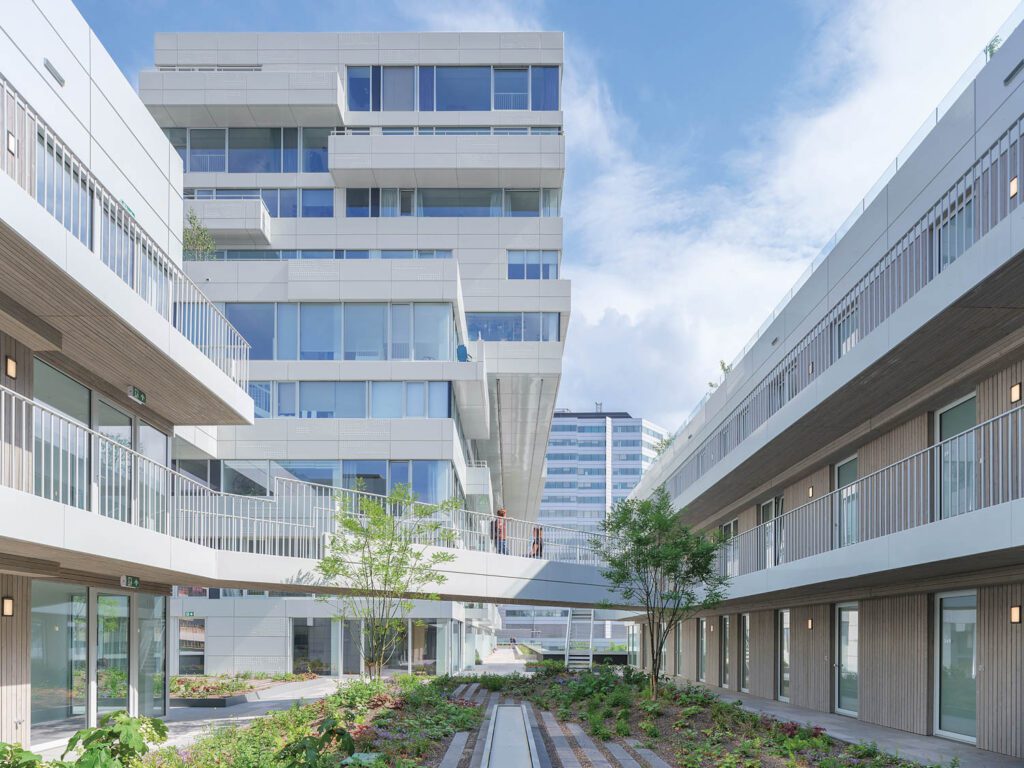
ID: You recently unveiled a proposal for a web of hexagonal photovoltaic panels made of ultralight film that could be installed over a Dutch motorway to help with butterfly migration. What drove you to develop that idea?
CG: From research, we found that the air currents from traffic disrupt insect migration, but when there’s a traffic jam and the air is still, they’re able to cross the highway, reproduce, and help with pollination. Our concept follows the whole idea of the butterfly effect: Start small and then get the ball rolling. That’s why we’re designers—to explore something that sounds logical, and to make it attractive. To get people to accept change, you need to make it beautiful. It’s the same with solar panels. To be honest, they can be very ugly when they’re just solid panels next to each other. But the aesthetics are what we love about Solar Solarix’s modular photovoltaic film, which we’re working with on the project. To innovate, you need to try. Build a program, then analyze, evaluate, and improve.
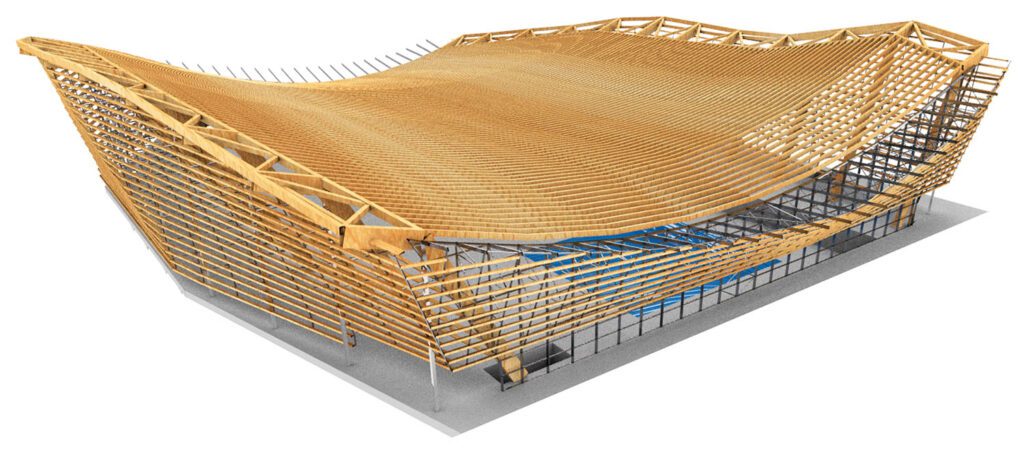
ID: The Aquatics Centre is the only new building Paris is introducing for the 2024 Olympic Games. How have approaches to large sports venues changed?
CG: Big event venues are at a turning point, especially since we just finished an Olympic Games without a public audience. We designed this as a sports complex for the neighborhood first, and then we thought about how to transform it for this amazing two-week event as well. That involves some compromises—maybe during the games something feels a little smaller than it could have—but the legacy of the project was the most important. What’s exciting is that the Olympics will give it a chance to touch a wider public, and I think that’s one of the real targets of sustainable architecture—to get people more involved. Hopefully that’s the magic of the project.
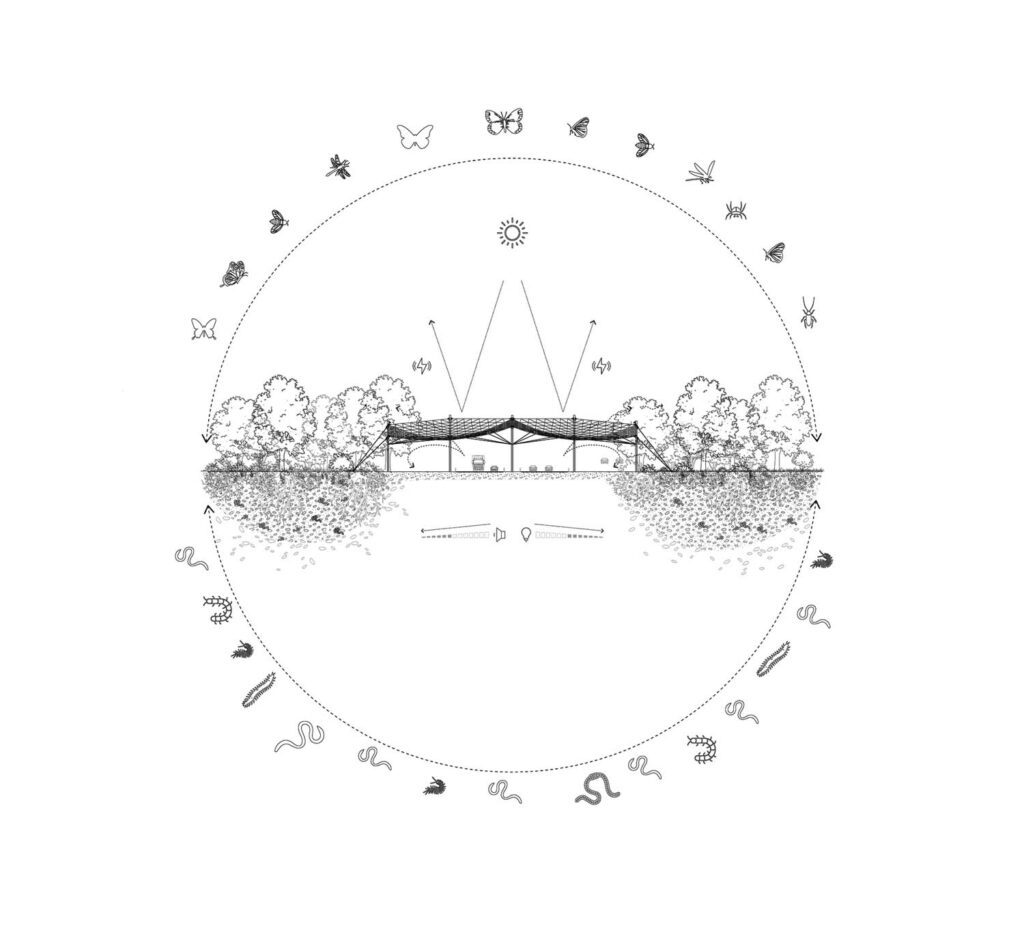
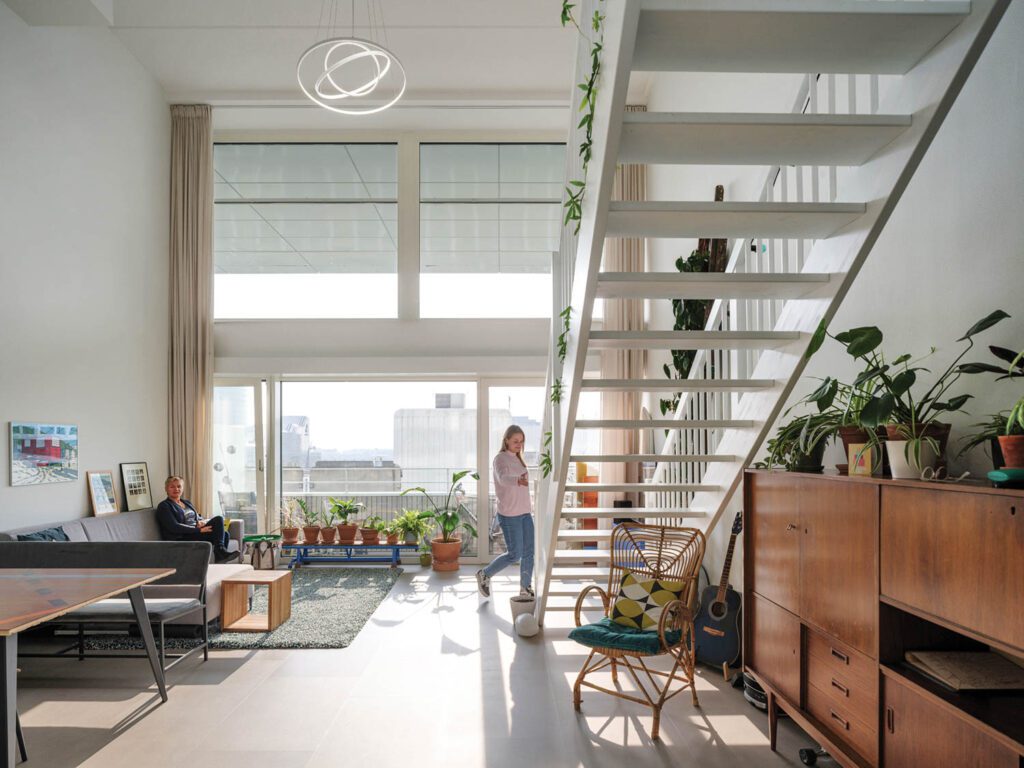
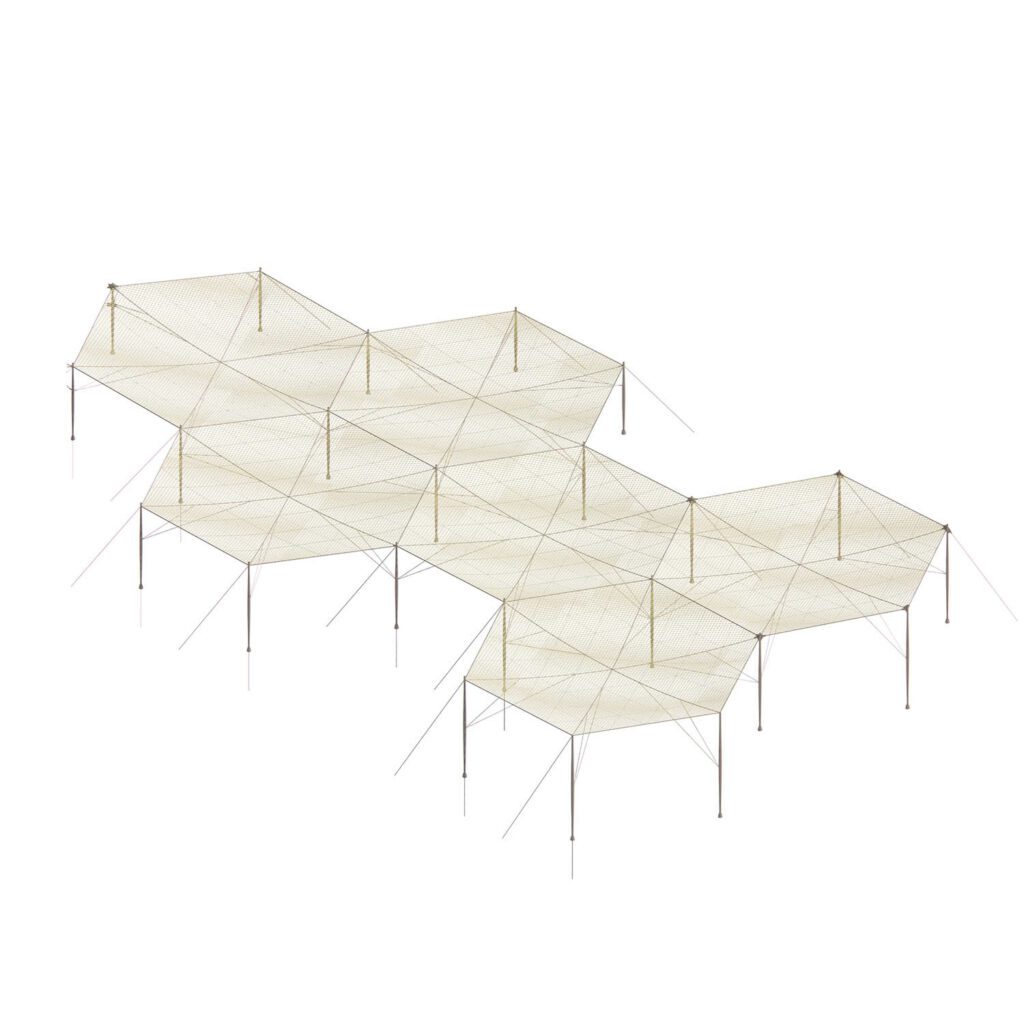
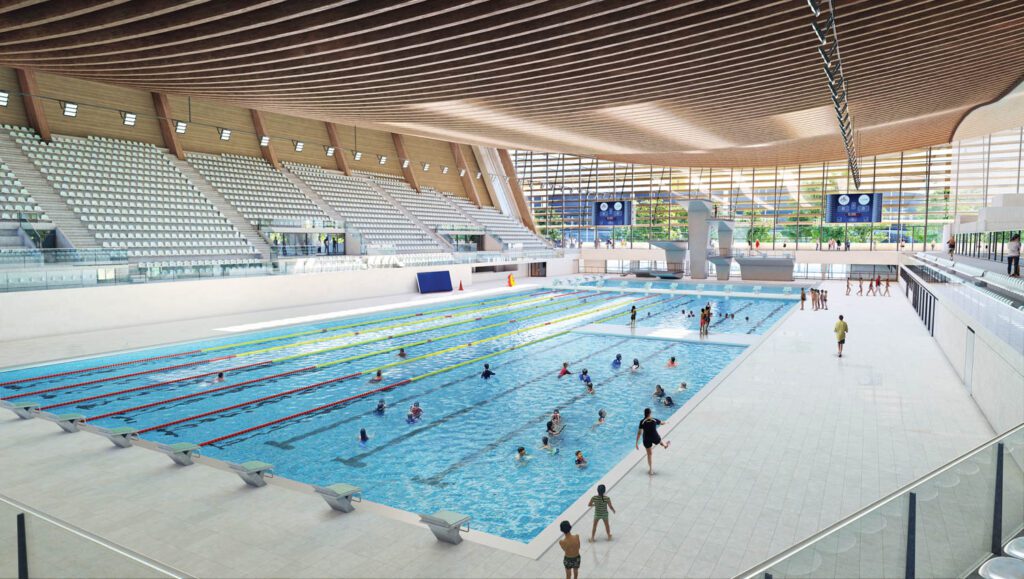
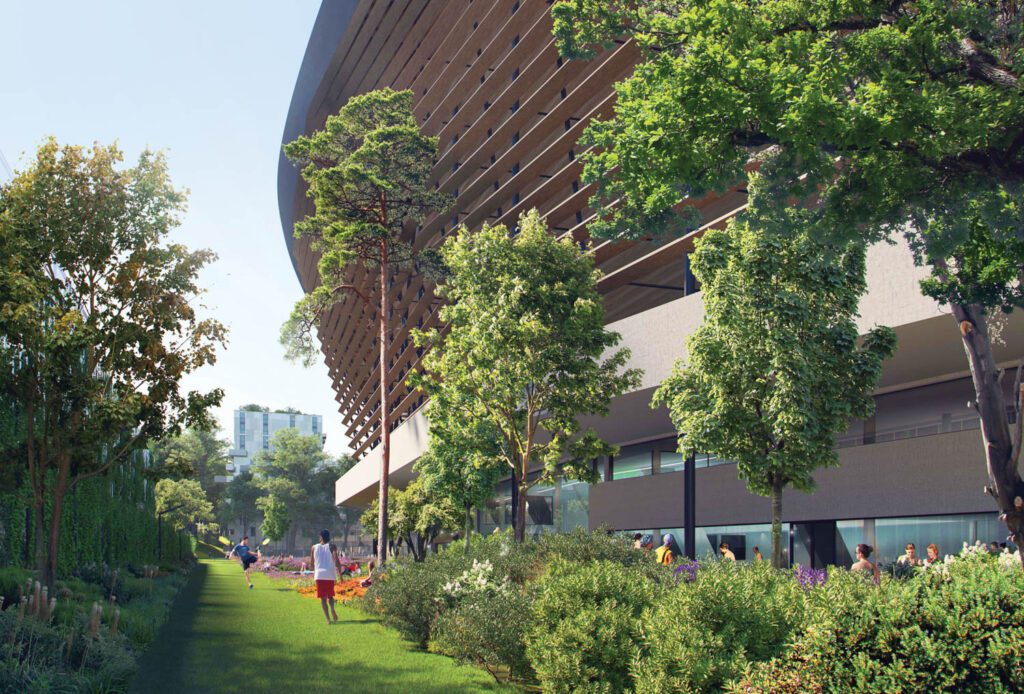

more
Projects
ZGF Architects Adapts a Derelict Campus Building in Los Angeles into an Energy-Efficient Educational Space
It’s a universal axiom: The most sustainable building is the one that is not built. ZGF adopted this principle as the plot line in renovating and repurposing a somewhat Brutalist building on the campus of California St…
DesignWire
A New Cultural Center by Dorte Mandrup Celebrates and Safeguards the UNESCO-Protected Greenland Wilderness
The Danish nonprofit Realdania and local governmental groups have opened the Ilulissat Icefjord Centre on the edge of the UNESCO-protected Greenland wilderness, 150 miles north of the Arctic Circle. The 16,000-square-foo…
DesignWire
Design Miami/ 2021 Spotlights Socially Conscious Designs
While Art Basel Miami Beach anchored Miami’s boasting week of art, design and fashion last week, Design Miami/, right across the street at the Pride Park, determined the busy calendar’s design trajectory. With the re…
